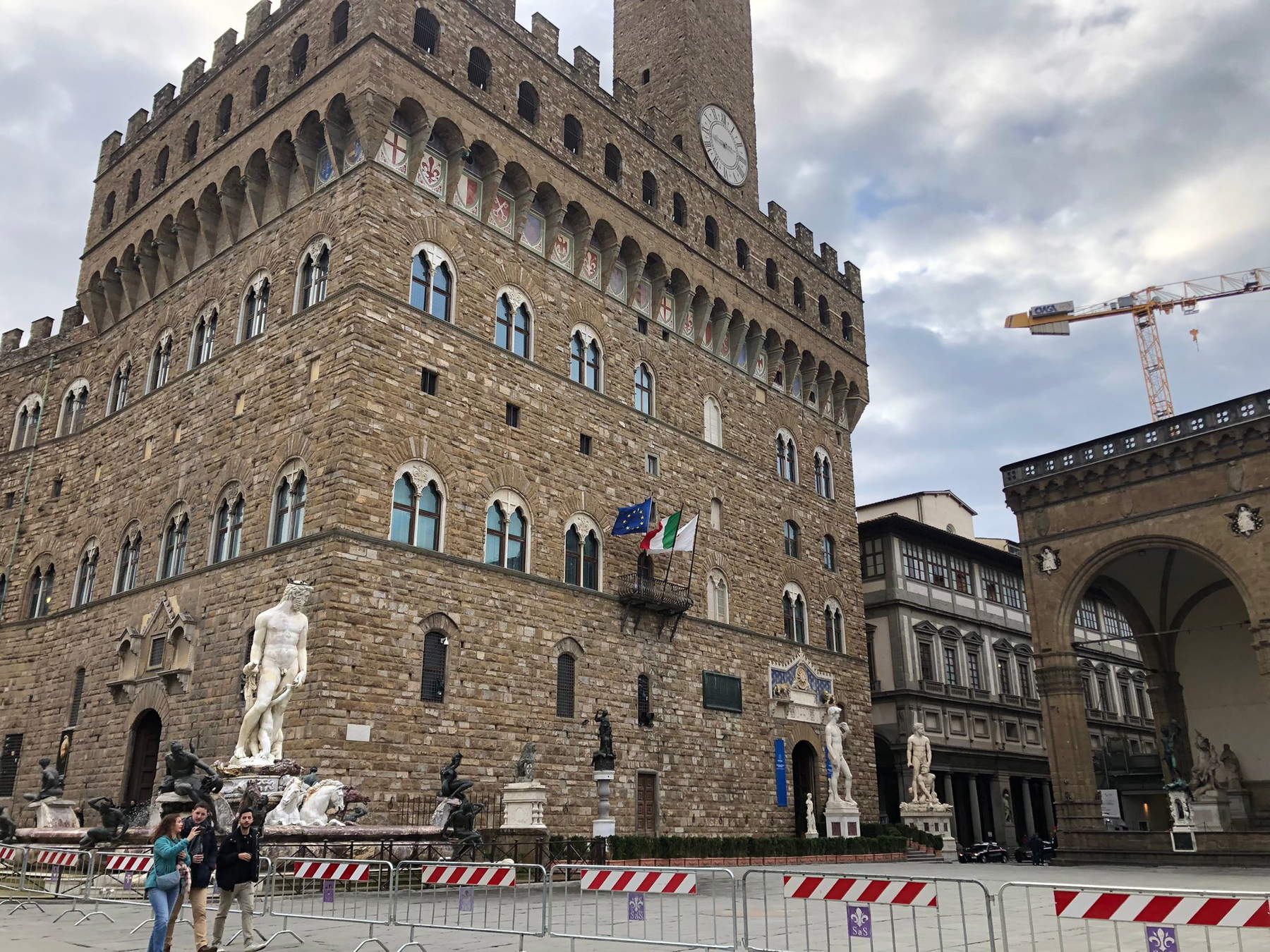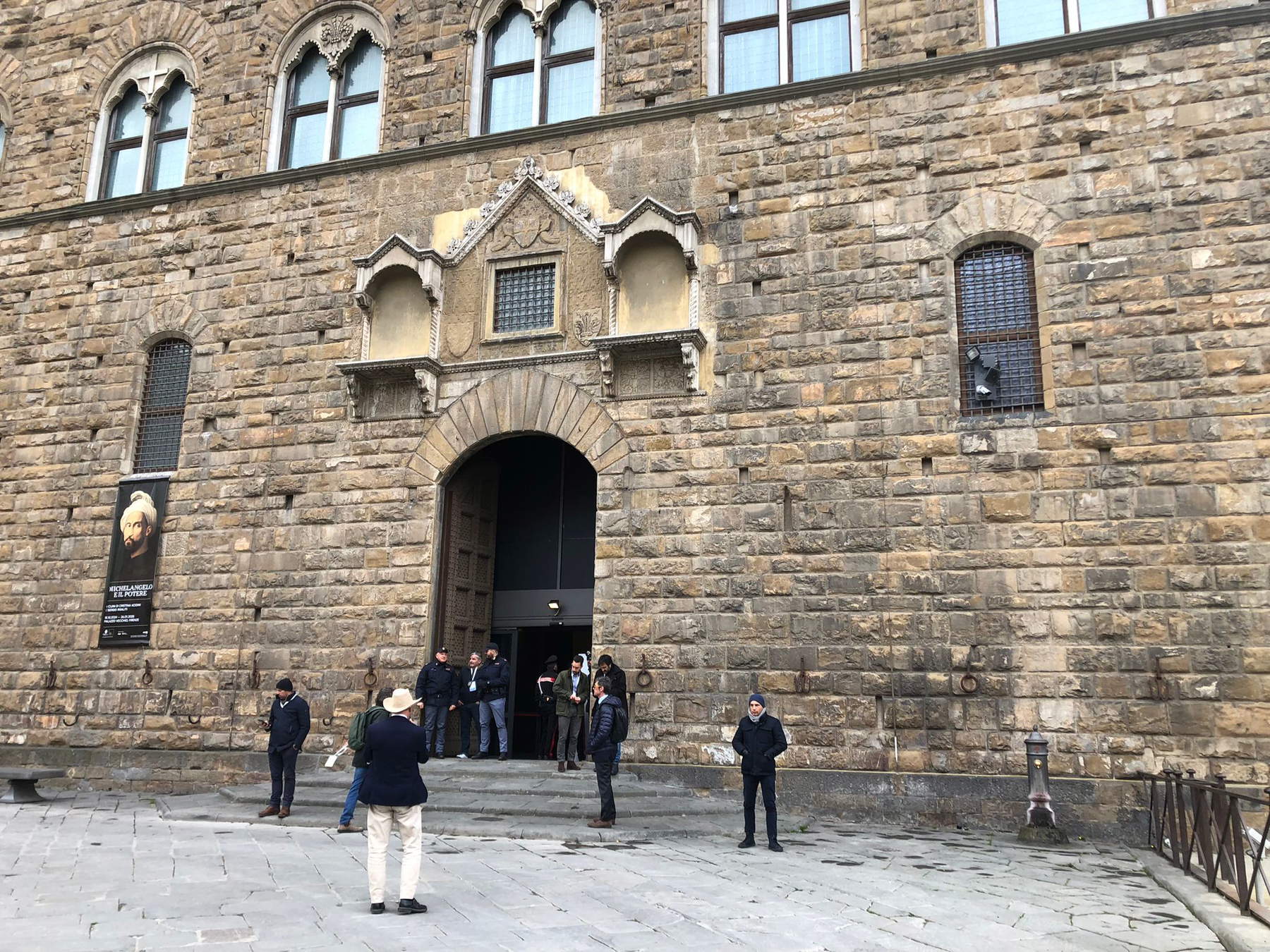Florence, G7 Tourism kicks off: armored Piazza della Signoria
Piazza Signoria armored for the G7 Tourism Ministers’ meeting in Florence. That’s how the area surrounding Palazzo Vecchio looked this morning in anticipation of the summit called for by Minister Daniela Santanchè with colleagues from the world’s seven most industrialized countries today and tomorrow in Florence. The official summit includes a family photo under the Loggia de’ Lanzi at 12:30 p.m. and in the afternoon an out-of-town trip to Monteriggioni, the medieval village in the province of Siena renowned for its turreted walls atop a hill.
The Florentine week is full of side events organized by the government and local authorities: yesterday afternoon guests of the maison Ferragamo at Palazzo Spini Ferroni the conference Innovation, inspiration and sustainability visions for the future of tourism where the minister debated with Andrea Bocelli, Leonardo Ferragamo, Alberta Ferretti, Rocco Forte, Flavio Briatore and others.
In the morning, on the other hand, meeting organized by the Florentine municipal administration with the tourism aldermen of the municipalities of Florence Jacopo Vicini, Rome Alessandro Onorato, Venice Simone Venturini, and Milan Martina Riva to take stock from the point of view of the impact on the urban fabric. These cities represent 25 percent of the Italian tourism market, and according to data from the same Ministry of Tourism here, the presences recorded during 2023 are almost 75 million, compared to the 71 million recorded in 2019 (+5 percent compared to 2019). These destinations alone make up 16.8% of national presences, with Florence alone accounting for 2%.
Mayors and aldermen reiterated common positions on the possibility of having more power for mayors with the appropriate tools to manage the flows arriving in their territories. Among the requests was also to sit at the table, now reserved for the state and regions, where tourism policies are decided. Representatives from the cities of Turin, Bologna and Verona were also present.
Prompt was the minister’s response intercepted by journalists on the sidelines of the event at Palazzo Ferragamo: “More powers? To do what? I ask because I do not feel that where there are particular laws, solutions to overtourism have been found. I am not hostile to that. And, since we have already confronted each other and will confront each other again, tell me what these laws would be for. Let’s talk about it. So far they haven’t brought me any solution solutions.”



On the choice of the visit to the renowned Sienese village Santanchè explained, “There are not only Florence, Milan, Venice, Rome, Naples. We have an Italy that is more hidden, more secret, and on the other hand the treasures are secret, of wonderful places, of small villages with a tourist vocation, we have 5,600 villages where 90 percent of our gastronomic excellence is produced.” In Monteriggioni the visit was designed “to show what Italy is, otherwise we always stop at the best-known locations and do not discover the real, more beautiful and hidden Italy that we must learn to tell, to promote. We have to understand that you win with a potpourri of offerings. We have to become sexier in our tourism offer.”
The minister also returned to the tourist tax that municipalities charge tourists, stating that “there is a need to see how to make this tourist tax better. I think the fairest thing is that it has to be proportionate, in the sense that someone who pays 100 euros to sleep is not fair for them to pay the same amount as someone who maybe, and I don’t want to criminalize wealth because it’s not in my way of thinking, rents a suite in one of the hotels in Florence, for example since we are here, I think they can pay something more. So I think we need proportionality. The other thing that I think is right is that Italy is all about tourism, and so to be able to give the opportunity to the mayors, who feel, to apply it today. I remember that there are less than 1,000 municipalities that apply it; our bell towers, on the other hand, are 8,000. I believe that there are many more municipalities with a tourist vocation, so it will be an option that will have to be left to the mayor and then the mayor will decide.”
Interesting in this regard is what was revealed by Simone Venturini, tourism councillor of the City of Venice, about the entrance fee, which “has made it possible to bring out, on the one hand, a whole gray band of hotel, extra-hotel, and rental establishments that were not officially censured and that registered to obtain exemption for their tourists on the days of the entrance fee. So a great effect it had on surfacing. Another great effect of the access fee is related to the fact that Venice is the first city to know in advance how many tourists it will have that day. This is a tool that no city has today. Venice is then able to have a time window, that is, from the booking to the arrival of the tourist, to offer those who book a range of information about the city. Also here in perspective we will have to think about strengthening controls, for example at the station think about automatic access barriers.”
 |
| Florence, G7 Tourism kicks off: armored Piazza della Signoria |
Warning: the translation into English of the original Italian article was created using automatic tools. We undertake to review all articles, but we do not guarantee the total absence of inaccuracies in the translation due to the program. You can find the original by clicking on the ITA button. If you find any mistake,please contact us.





























